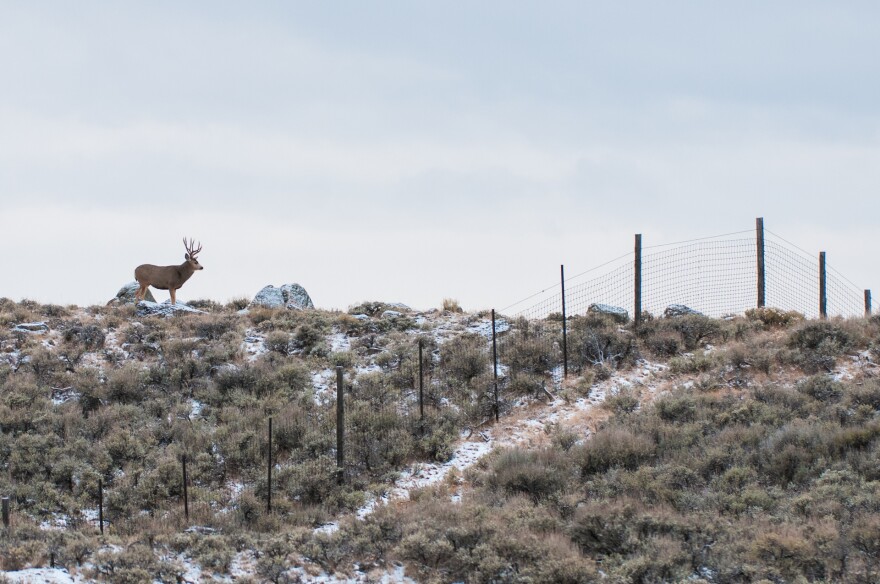A new study from the University of California, Berkeley (UC Berkeley) shows that fencing has a bigger effect on migratory wildlife like deer and antelope than previously thought.
"Fencing has been on the landscape for really a long time, but it's actually also missing from the discussion of a lot of ecologists and conservationists, even when we think about human impact on on the globe, people talk about roads, people talk about urban [areas], but fencing has been on the landscape for so long that people kind of take it as a part of the landscape and kind of become in that way invisible, take it for granted," said lead author Wenjing Xu.
Xu, a Ph.D. candidate in the Department of Environmental Science, Policy and Management at UC Berkely, painstakingly compiled fencing location data from places like the Wyoming Bureau of Land Management, the U.S. Forest Service, and the U.S. Fish and Wildlife Service to get an accurate map of fence locations. She discovered that the length of fences in Wyoming alone is about 3,728 miles - enough to span the U.S.-Mexico border twice.

"That's a very striking amount of fences there. We also know that modifying fences and make them more wildlife-friendly is actually very costly. So it's kind of very important for us to be able to prioritize limited resources to the most problematic fencing segments," said Xu.
The team is also publishing a software package they created that will help wildlife managers around the world quickly analyze GPS tracking data to identify fences and other barriers that might be impeding the vital movements of animals.
Xu used this software to compare the new maps of fence to GPS tracking data that collected locations every two hours for 24 tagged female mule deer and 24 pronghorn antelope. The program also categorizes different types of behaviors of animals that encounter a fence, such as quickly crossing over the fence, pacing back and forth along it, or turning around and walking away from it. This helped pinpoint which fences are encountered more often and which ones are causing the biggest issues.

Different animals interact with fences in different ways. For example, mule deer are likely to jump over a fence, while pronghorn prefer to "crawl" under it on their knees. Landowners can find guidance for how to make their fencing more permeable to migratory wildlife from the Game and Fish on their website, and some organizations have already taken on the task of transitioning to wildlife-friendly fencing. But not all fences are regularly maintained.
"Sometimes, when the fencing is really old and it's served a purpose in the past, but right now, it's no longer being used, so these fences are dangling and not really tight, and that kind of fencing is actually very bad for wildlife. And also, it's not really serving the purpose for landowners. So these fences are usually recommended to be removed," said Xu.
But she stressed that the project isn't trying to get rid of fences altogether.
"Fencing, it has been with us for so long, and it definitely has its own merits. But just like any kind of technology, development of human society, we need to bring in some sort of more critical viewpoint to them. And nothing is completely bad or completely good," she said.
Because they've been around for so long, fences may have other ecological impacts that we're not aware of yet. According to Xu, studying and modifying fences is an important way to help people and wildlife coexist.
"One hope that I have for this publication is to really encourage more agencies or scientists on the ground to just record where they[fences] are and having a better estimation of how many fences are out there," she said. "And from there, we can then better understand their actual ecological impact."
Have a question about this story? Contact the reporter, Ivy Engel, at iengel@uwyo.edu.







